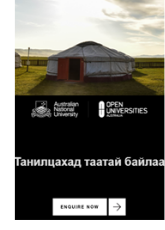As global crises intensify and our cities are forced to adapt, policymakers need to engage with marginalised communities and ensure planning decisions are based on principles of human rights and justice, Pakamas Thinphanga writes.
The rain arrived earlier than usual in Thailand this year. In May, Khon Kaen city’s Mittraphap railway community in the country’s northeast was inundated for several days, with flood waters rising to people’s knees. Since then, the informal settlement – which is home to over 700 families – has flooded frequently.
In September, Typhoon Noru crossed the South China Sea and the already-saturated northeast region braced for more floods from the Category 4 storm. Some cities along the typhoon’s path were prepared with evacuation and risk reduction action plans. But in the Mittraphap community, there were no flood mitigation measures or evacuation plans for the informal settlement. The community was inundated and remained underwater for weeks.
As a result of climate change and unplanned urbanisation, flood patterns are changing and flood risks are growing. For communities on the margins like Mittraphap, each flood is a serious economic setback, and the increased frequency of floods means that they may never fully recover before the next disaster strikes.
Cities are at the front line of climate change and other crises such as conflicts and the COVID-19 pandemic. But what’s clear from the experience of the Mittraphap community – and others like it – is that their impacts are unevenly distributed within cities, with marginalised groups often bearing the greatest burden.
In response, policymakers need to better plan for more inclusive, equitable, resilient, and sustainable cities to address the current problems and prepare for future challenges. To achieve this, cities must plan for a better future for those people on the margins, including the urban poor and people living in informal settlements. This is a major challenge, especially in cities in the Global South, where most rapid urbanisation has occurred over the last decade.
One issue facing communities like Mittraphap in Khon Kaen is that planning decisions are often made with limited public participation from marginalised communities.
For example, in 2015, authorities decided to relocate a regional bus terminal further away from the community. This removed a major source of income from local people, many of whom made a living selling food to passengers at the bus terminal. With limited access to welfare and state assistance, decisions like these can have serious consequences.
The relocation of the bus terminal nine kilometres out of town also did not consider commuters’ needs, much less the dependence of the community on the bus terminal for daily income. Better consideration of the local communities could have helped.
But poorly considered planning decisions don’t just lead to material changes in communities’ wellbeing – they are interconnected with environmental changes and can have devastating consequences.
The vulnerability of the Mittraphap community to the impacts of climate change isn’t simply a result of limited resources, poor housing conditions, and tenuous land rights and tenures. Their climate vulnerability is also a result of policy and planning decisions. In order to protect its business centre, Khon Kaen city diverts floodwaters, leaving low-lying settlements more vulnerable.
Cities are shaped by policy decisions that are shaped by political and economic influence. Often this means that special interests with greater resources and access to those in power, such as developers, have an outsized impact on decision-making. The informal economy accounts for 55.7 per cent of the overall labour force in Thailand, but there is little recognition or representation of these workers in the planning decisions that affect them.
I t shouldn’t be that way. In Thailand and throughout the Global South, the urban poor and low-income communities build and maintain cities with their labour. It’s incumbent on policymakers to engage with these people and consider their needs before making planning decisions with potentially catastrophic consequences.
t shouldn’t be that way. In Thailand and throughout the Global South, the urban poor and low-income communities build and maintain cities with their labour. It’s incumbent on policymakers to engage with these people and consider their needs before making planning decisions with potentially catastrophic consequences.
But as the interwoven issues of urbanisation, urban poverty, vulnerability, and disasters are become more complex, as cities in the Global South continue to grow and the climate changes, the future of cities needs to be defined by more than just participation. For our cities to truly thrive, they must be shaped by marginalised people – like those of Thailand’s Mittraphap railway community – based on principles of human rights and justice.





 The rise of ‘big other’ smart cities in China
The rise of ‘big other’ smart cities in China
 Should cities be built with pandemics in mind?
Should cities be built with pandemics in mind?